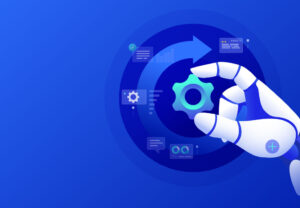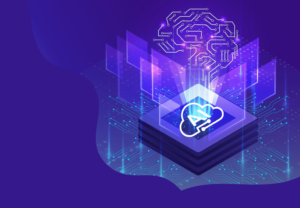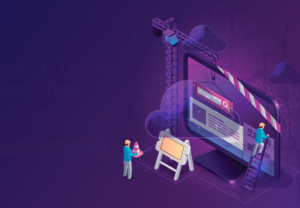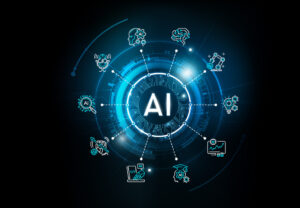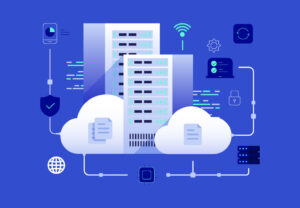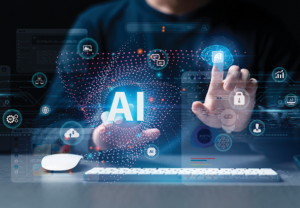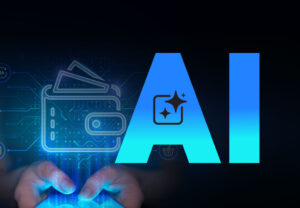Agentic AI: Orchestration or Reasoning
“Agentic AI represents a significant progression from traditional automation, introducing autonomous systems capable of both sophisticated reasoning and coordinated action. Effectively deploying these multi-agent systems requires navigating the complexities of their orchestration, including careful attention to agent memory management and the strategic incorporation of human oversight. Assessing agent behavior and carefully selecting appropriate tools are vital steps for achieving reliable performance, underscoring that success in Agentic AI depends on integrating technical proficiency with comprehensive enterprise strategies.”
As organizations evaluate their next-generation AI investments, a fundamental question emerges: Is the primary strategic value derived from sophisticated coordination of AI components through orchestration, or from the autonomous cognitive abilities inherent in advanced reasoning systems?
This distinction carries profound implications for technology strategy, resource allocation, and competitive positioning. Organizations that understand the nuanced interplay between orchestration mechanisms and reasoning capabilities will be positioned to deploy truly transformative AI systems that deliver measurable business outcomes while maintaining operational excellence and risk management standards.
The analysis that follows examines both orchestration and reasoning as complementary forces rather than competing alternatives, providing strategic frameworks for technology leaders to evaluate platforms, design implementations, and build sustainable competitive advantages through intelligent automation.
Agentic AI - A New Era of Intelligent Automation
The evolution of artificial intelligence has progressed through distinct phases, from rule-based expert systems to machine learning models, and now toward agentic systems that represent a fundamental shift in how AI operates within enterprise environments. Traditional AI implementations have largely functioned as sophisticated tools that respond to specific inputs with predetermined outputs, requiring human oversight for complex decision-making and workflow management.
Agentic AI transcends these limitations by introducing systems capable of autonomous action, goal-oriented behavior, environmental perception, and adaptable decision-making processes. These systems exhibit four critical characteristics that distinguish them from conventional AI applications: autonomy in executing tasks without constant human intervention, proactivity in identifying opportunities and initiating actions, social ability to interact with other agents and human stakeholders, and reactivity to environmental changes and unexpected conditions.
The architectural foundation of agentic systems combines sophisticated reasoning engines with orchestration frameworks that enable multiple AI components to work cohesively toward complex objectives. This combination allows organizations to deploy AI systems that can manage multi-step business processes, adapt to changing conditions, and coordinate resources across disparate systems and stakeholders.
For enterprise leaders, understanding the distinction between orchestration and reasoning capabilities becomes essential for strategic investment decisions, operational efficiency optimization, and risk management frameworks. Organizations that successfully implement agentic AI systems report significant improvements in process automation, decision quality, and operational responsiveness, while those that focus on isolated AI components often struggle to achieve transformative business outcomes.
The Power of Orchestration in Agentic Systems
AI orchestration represents the systematic coordination and management of multiple AI agents, models, and disparate components including data sources, tools, and external APIs to achieve unified, complex business objectives. The orchestration layer functions analogously to a symphony conductor who manages individual musicians to produce a cohesive musical performance, ensuring that each component contributes optimally to the overall outcome.
- A) Multi-agent AI system orchestration challenges emerge from the complexity of coordinating specialized agents that may operate with different data models, processing speeds, and communication protocols. Effective orchestration systems must manage inter-agent communication channels, task assignment algorithms, and workflow synchronization mechanisms while maintaining system coherence and performance standards. Advanced orchestration platforms implement sophisticated scheduling algorithms that optimize resource utilization while ensuring that critical path activities receive appropriate priority and computational resources.
- B) Workflow management within orchestration systems defines sequences of operations, decision points, and conditional logic that guide system behavior across complex business processes. These workflows must accommodate dynamic conditions, exception handling, and rollback procedures while maintaining audit trails and compliance standards. Modern orchestration frameworks support both deterministic workflows for predictable processes and adaptive workflows that can modify their execution paths based on intermediate results and environmental conditions.
- C) Tool integration capabilities enable agents to connect with external systems, databases, and APIs for data retrieval and action execution. This integration layer must handle authentication, data transformation, error recovery, and performance monitoring while ensuring security and compliance requirements are maintained. LangChain agent memory management techniques become particularly important in these integrations, as agents must maintain context and state information across multiple tool interactions and extended workflows.
- D) Resource allocation optimization ensures efficient use of computational resources, network bandwidth, and storage capacity while maintaining performance standards and cost controls. Advanced orchestration systems implement dynamic resource management algorithms that can scale resources based on workload demands, redistribute tasks when bottlenecks occur, and optimize cost-performance ratios across different execution environments.
- E) Error handling and resilience mechanisms design systems that can identify failures, implement recovery procedures, and adapt workflows to maintain operational continuity. These mechanisms must distinguish between transient errors that warrant retry attempts and systemic failures that require workflow modification or human intervention. Implementing ReAct framework for AI agents within orchestration systems provides structured approaches to error detection, reasoning about failure modes, and taking corrective actions.
The strategic value of orchestration manifests through enhanced scalability in managing complex processes by distributing tasks across multiple agents and systems. Organizations can achieve operational efficiency by streamlining multi-step operations that previously required extensive human coordination. Integration capabilities enable connection of disparate AI capabilities with legacy systems, creating cohesive operational environments that leverage existing technology investments while introducing advanced AI capabilities.
Enterprise use cases for orchestration include complex business process automation that spans multiple departments and systems, supply chain optimization that coordinates demand forecasting with inventory management and logistics, and advanced customer service systems that integrate multiple communication channels with knowledge bases and fulfillment systems. Leading platforms such as AutoGen vs CrewAI for collaborative agents provide different approaches to orchestration, with AutoGen focusing on conversational agent coordination and CrewAI emphasizing role-based agent collaboration for complex workflows.

The Substance of Reasoning in Agentic Systems
AI reasoning encompasses the cognitive ability of an agent to process information, apply logical principles, infer conclusions, formulate plans, and make informed decisions, particularly in novel or ambiguous situations that require more than pattern matching or rule-based responses. Advanced reasoning capabilities distinguish agentic systems from conventional automation by enabling autonomous problem-solving and adaptive behavior in dynamic environments.
Agentic AI reasoning capabilities limitations become apparent when systems encounter scenarios that require common sense knowledge, causal understanding, or creative problem-solving that extends beyond their training data. However, within defined domains and with appropriate knowledge representation, reasoning systems can deliver sophisticated analytical capabilities that exceed human performance in specific tasks while maintaining consistency and processing speed advantages.
- A) The cognitive loop architecture underpins effective reasoning systems through a structured cycle of perception, analysis, planning, action, and learning. This feedback-driven approach enables agents to continuously improve their decision-making capabilities while adapting to changing environmental conditions. Agentic AI planning vs execution loops explained reveals how systems separate strategic planning phases from tactical execution phases, allowing for optimization at different temporal scales and complexity levels.
- B) Contextual understanding capabilities enable agents to interpret and leverage situational information that may not be explicitly provided in immediate input. Advanced reasoning systems maintain contextual awareness across extended interactions, enabling them to provide more relevant and personalized responses while avoiding repetitive or inappropriate actions. This contextual processing requires sophisticated memory management and knowledge retrieval mechanisms that can efficiently access relevant information while filtering irrelevant data.
- C) Problem decomposition techniques allow reasoning systems to break down complex challenges into manageable sub-problems that can be addressed systematically. This hierarchical approach to problem-solving enables agents to tackle challenges that would be intractable if approached as monolithic problems, while also providing opportunities for parallel processing and resource optimization.
- D) Goal-driven planning capabilities enable agents to create sequential steps and resource allocation strategies to achieve specific objectives. These planning systems must consider multiple optimization criteria, resource constraints, and temporal dependencies while maintaining flexibility to adapt plans based on changing conditions or intermediate results. Advanced planning systems incorporate probabilistic reasoning to account for uncertainty and risk factors in their strategic recommendations.
- E) Knowledge representation and retrieval mechanisms provide the foundation for effective reasoning by enabling agents to access and utilize stored information efficiently. Modern reasoning systems implement sophisticated knowledge graphs, semantic representations, and retrieval algorithms that can identify relevant information across large knowledge bases while maintaining response time performance standards.
- F) Adaptability features allow reasoning systems to adjust their plans and actions based on new information, environmental changes, or feedback from previous actions. This adaptive capability requires sophisticated learning algorithms that can update decision-making parameters without compromising system stability or performance consistency.
The strategic value of reasoning capabilities manifests through enhanced autonomy that reduces the need for human intervention in dynamic scenarios, enabling organizations to automate complex decision-making processes that previously required expert human judgment. Advanced problem-solving capabilities enable systems to tackle unstructured, complex, or ambiguous challenges that conventional automation cannot address effectively. Improved decision quality results from systematic analysis of multiple factors and alternatives, leading to more optimal or insightful outcomes than human-only or rule-based approaches.
Learning and improvement capabilities enable reasoning systems to adapt their behavior over time, accumulating experience and knowledge that enhances their effectiveness in similar future situations. This continuous improvement aspect provides long-term value that compounds over time, making reasoning systems increasingly valuable assets for organizations.
Enterprise use cases for reasoning systems include strategic forecasting that analyzes multiple market factors and trends to provide actionable business intelligence, complex anomaly detection that identifies subtle patterns and correlations in large datasets, dynamic resource management that optimizes allocation decisions based on changing demand and supply conditions, and personalized recommendation engines that consider individual preferences alongside contextual factors and business objectives.
The Interplay: Orchestration as the Platform, Reasoning as the Engine
The strategic question of orchestration versus reasoning presents a false dichotomy that overlooks the complementary nature of these capabilities in successful agentic AI implementations. Rather than competing against alternatives, orchestration and reasoning represent synergistic forces that enable robust, scalable, and effective AI systems capable of delivering transformative business outcomes.
- A) Orchestration enables reasoning by providing the structural framework, data flow management, and tool access capabilities that allow individual agents to exercise their cognitive abilities effectively. Without sophisticated orchestration, reasoning agents operate in isolation, unable to access the diverse data sources, computational resources, and integration points necessary for complex problem-solving. The orchestration layer structures the operational environment for intelligent action while ensuring that reasoning agents receive timely, relevant, and properly formatted information necessary for optimal decision-making.
Consider a complex supply chain optimization scenario where orchestration directs real-time data from multiple sources including demand forecasts, inventory levels, transportation costs, and supplier capacity to specialized reasoning agents. These agents process the information, identify optimization opportunities, and generate recommendations that are then communicated through the orchestration layer to execution systems and human stakeholders. The orchestration framework ensures data consistency, manages timing dependencies, and handles exception conditions while the reasoning agents provide the analytical intelligence necessary for optimal decision-making.
- B) Reasoning capabilities inform and optimize orchestration by enabling agents to make intelligent decisions about workflow management, resource allocation, and coordination strategies. Advanced reasoning agents can analyze orchestration patterns, identify bottlenecks or inefficiencies, and recommend modifications to improve overall system performance. This creates dynamic orchestration systems that can adapt their coordination strategies based on learned patterns and changing operational conditions.
Human-in-the-loop design patterns agentic AI become particularly important in this integrated approach, as reasoning agents may identify situations that require human judgment or approval, while orchestration systems manage the communication and workflow coordination necessary to incorporate human decisions seamlessly into automated processes. These patterns ensure that human expertise remains accessible while maximizing the efficiency benefits of automated coordination and reasoning.
- C) The emergence of intelligent systems results from the synergistic combination of sophisticated reasoning capabilities with robust orchestration frameworks. These systems exhibit emergent properties that exceed the sum of their individual components, demonstrating adaptive behavior, learning capabilities, and problem-solving performance that neither orchestration nor reasoning alone can achieve.
Debugging agentic AI unexpected behavior requires understanding the interaction between orchestration and reasoning components, as issues may arise from coordination failures, reasoning errors, or misalignment between orchestration logic and reasoning outputs. Effective debugging strategies must examine both the individual agent behaviors and the system-level interactions that produce overall outcomes.
Strategic implications for organizational leaders emphasize that investment strategies must account for both the cognitive capabilities of individual agents and the overarching system design that enables their coordination. Organizations that overemphasize reasoning capabilities without adequate orchestration infrastructure struggle to scale their AI implementations beyond isolated use cases. Conversely, sophisticated orchestration of simple, rule-based components may achieve operational efficiency but fails to deliver the adaptive intelligence necessary for competitive advantage in dynamic markets.
Successful agentic AI implementations require balanced investment in both reasoning capabilities and orchestration infrastructure, supported by governance frameworks that ensure alignment with business objectives and risk management requirements. Evaluating autonomous AI agent performance becomes essential for optimizing this balance and ensuring that both orchestration and reasoning components contribute effectively to desired business outcomes.

Implementing Agentic AI: Strategic Considerations for Leadership
A) Organizational readiness assessment forms the foundation of successful agentic AI implementation, requiring comprehensive evaluation of data infrastructure, legacy system integration capabilities, and talent capabilities. Organizations must ensure that their data architecture can support the volume, velocity, and variety requirements of agentic systems while maintaining security, privacy, and compliance standards. Legacy system integration capabilities determine the feasibility of connecting agentic AI systems with existing business processes and technology infrastructure.
B) Talent development requirements extend beyond traditional AI and data science capabilities to include specialized roles such as AI architects who design system-level integration patterns, prompt engineers who optimize agent behavior and communication, and AI governance specialists who ensure ethical and compliant deployment of autonomous systems. These specialized skills become critical success factors as organizations move beyond pilot implementations to production-scale deployments.
C) Pilot program strategies should focus on targeted, high value use cases that demonstrate a clear return on investment while providing learning opportunities for broader organizational deployment. Effective pilot programs establish measurement frameworks that capture both quantitative performance metrics and qualitative insights about system behavior, user acceptance, and integration challenges.
D) Governance and ethics frameworks establish guardrails for autonomous AI systems, ensuring transparency in decision-making processes and accountability for system outcomes. These frameworks must address questions of algorithmic bias, decision explainability, and human oversight requirements while enabling the operational efficiency benefits that justify agentic AI investments.
E) Agentic AI tool selection and integration best practices require careful evaluation of platform capabilities, vendor ecosystems, and long-term strategic alignment. Organizations must consider factors such as scalability, security, integration complexity, and total cost of ownership while ensuring that selected platforms support both current requirements and anticipated future needs.
F) Iterative development approaches acknowledge that agentic AI systems evolve through continuous learning and adaptation, requiring planning processes that accommodate system refinement, capability expansion, and performance optimization over time. This evolutionary approach demands flexible architecture designs and changes management processes that can support ongoing system development without disrupting operational continuity.
G) Vendor selection criteria should evaluate platforms based on their strengths in both orchestration and reasoning enablement, ensuring that selected solutions can support the integrated approach necessary for effective agentic AI implementations. Organizations should also consider vendor roadmaps, ecosystem partnerships, and support capabilities when making platform decisions that will influence their AI strategy for multiple years.
Conclusion
For enterprise artificial intelligence, Agentic AI marks a critical advancement, fundamentally shaped by the interplay of sophisticated reasoning and sophisticated orchestration. Businesses that strategically cultivate both these aspects will be well-placed to build adaptive, autonomous, and high-value AI systems, securing lasting competitive differentiation. Technology leaders must therefore prioritize holistic AI strategies. These strategies should address both the inherent intelligence of individual agents and their seamless integration and coordination across complex systems, allowing organizations to capitalize on agentic AI’s capabilities while maintaining operational control and meeting strategic goals.
Motherson Technology Services leverages these advanced agentic AI capabilities to help organizations achieve competitive advantage through intelligent automation, enhanced decision-making, and operational excellence. By combining deep technical expertise in both orchestration and reasoning systems with proven implementation methodologies, Motherson enables clients to transform their operations and create sustainable value through strategic AI deployment.
The future belongs to organizations that can successfully integrate intelligent reasoning with sophisticated coordination, creating AI systems that not only automate existing processes but also enable new forms of business value creation and competitive differentiation in rapidly evolving markets.
References
[1] https://www.huronconsultinggroup.com/insights/agentic-ai-agent-orchestration
[2] https://blog.kore.ai/what-is-agentic-reasoning
[3] https://www.ibm.com/think/topics/ai-agent-orchestration
[4] https://techsee.com/blog/ai_reasoning_explained/
[5] https://www.teneo.ai/blog/ai-orchestration-the-complete-guide
[6] https://botpress.com/blog/ai-agent-orchestration
[7] https://www.automationanywhere.com/rpa/agentic-ai
[8] https://aisera.com/blog/agentic-ai/
[9] https://docs.crewai.com/installation
About the Author:

Dr. Bishan Chauhan
Head – Cloud Services & AI / ML Practice
Motherson Technology Services
With a versatile leadership background spanning over 25 years, Bishan has demonstrated strategic prowess by successfully delivering complex global software development and technology projects to strategic clients. Spearheading Motherson’s entire Cloud Business and global AI/ML initiatives, he leverages his Ph.D. in Computer Science & Engineering specializing in Machine Learning and Artificial Intelligence. Bishan’s extensive experience includes roles at Satyam Computer Services Ltd and HCL prior to his 21+ years of dedicated service to the Motherson Group.

 July 29, 2025
July 29, 2025 Dr. Bishan Chauhan
Dr. Bishan Chauhan





